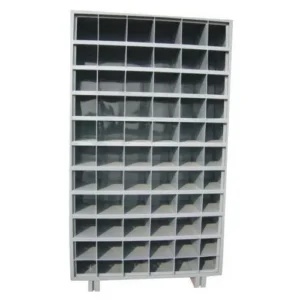Guide To Pest Control and Bed Bug Treatment
Introduction To Pest Control
Pest control is an essential practice in maintaining a clean, safe, and healthy environment, whether in homes, offices, or industrial spaces. Pests, ranging from insects like termites and cockroaches to rodents like rats, can cause significant damage to property and pose serious health risks. Among the many types of pests, bed bugs are particularly notorious for their resilience and the discomfort they cause. This guide will delve into the importance of pest control, with a particular focus on bed bug treatment, methods to eliminate pests, and preventive measures.
The Importance of Pest Control
Pest control is crucial for several reasons:
1. Health Hazards
Pests carry diseases that can be transmitted to humans and animals. For example, mosquitoes are known carriers of malaria and dengue, while rodents can transmit diseases like leptospirosis and hantavirus. Cockroaches can trigger allergies and asthma, especially in children. Bed bugs, although not known to spread diseases, cause itchy bites and discomfort that can lead to secondary infections from scratching.
2. Property Damage
Termites and carpenter ants are infamous for damaging wooden structures, causing costly repairs. Rodents gnaw through wires, insulation, and even piping, leading to electrical fires and water leaks. Additionally, pests like cockroaches and rats can contaminate food supplies, resulting in wastage and health risks.
3. Psychological Impact
Living in a pest-infested environment can be distressing. The constant fear of being bitten by bed bugs, the sight of cockroaches scurrying across the floor, or the sound of rats in the attic can lead to anxiety, stress, and sleepless nights. Bed bug infestations, in particular, are known for their psychological toll on individuals, as these tiny creatures feed on human blood, causing discomfort and frustration.
4. Economic Consequences
In businesses such as restaurants, hotels, and food processing industries, pest infestations can lead to closures, fines, and a damaged reputation. Bed bugs in hotels, for instance, can lead to negative reviews, driving away customers and resulting in revenue loss.
Common Types of Pests and Their Control
Effective pest control requires identifying the type of pest and using appropriate methods to eliminate them. Some common pests include:
1. Rodents
Rodents, such as mice and rats, are notorious for spreading diseases and causing structural damage. They are typically controlled using traps, rodenticides, and sealing entry points to prevent further infestations.
2. Termites
Termites feed on wood and can cause extensive damage to homes and buildings. Treatment involves chemical barriers, baiting systems, and sometimes fumigation to eradicate the entire colony.
3. Cockroaches
Cockroaches thrive in warm, humid environments and can spread diseases by contaminating food and surfaces. Pest control methods include using insecticides, traps, and maintaining proper sanitation to remove food and water sources.
4. Ants
Ants enter homes in search of food and water, and while most are harmless, some species can cause structural damage or health risks. Control measures involve baiting, spraying insecticides, and sealing off entry points.
5. Mosquitoes
Mosquitoes are known for transmitting diseases like malaria, dengue, and Zika virus. Control strategies include eliminating standing water where mosquitoes breed, using insect repellents, and installing screens on windows and doors.
6. Bed Bugs
Bed bugs are small, flat, reddish-brown insects that feed on human blood, primarily at night. They are one of the most difficult pests to eradicate, as they hide in tiny cracks and crevices during the day and are resistant to many over-the-counter pesticides.
Bed Bug Treatment: A Closer Look
1. Signs of a Bed Bug Infestation
Bed bug treatment are sneaky and elusive, making it difficult to detect an infestation until it becomes severe. Some common signs of bed bug infestations include:
- Bites: Small, red, itchy welts on the skin, usually in clusters or lines, often found on exposed areas such as the face, neck, arms, and legs.
- Bloodstains: Tiny bloodstains on bed sheets or pillowcases from crushed bed bugs after feeding.
- Fecal Spots: Dark brown or black fecal spots on mattresses, bed frames, and nearby furniture.
- Exoskeletons: Bed bugs shed their skins as they grow, leaving behind empty exoskeletons in their hiding places.
- Musty Odor: In severe infestations, bed bugs emit a sweet, musty odor.
2. Bed Bug Treatment Options
Eradicating bed bugs requires a thorough and methodical approach, as they can hide in various places, including mattresses, box springs, bed frames, furniture, and even electrical outlets. There are several bed bug treatment methods available:
a. Chemical Treatments
Chemical treatments involve the use of insecticides specifically designed to kill bed bugs. These treatments are usually applied by professional pest control services, as improper use of chemicals can be ineffective or harmful to humans and pets. Common chemicals used include pyrethroids, neonicotinoids, and desiccants.
b. Heat Treatment
Heat treatment is one of the most effective ways to eliminate bed bugs. It involves raising the temperature of the infested room to a level that is lethal to bed bugs (around 120°F or 49°C). This method is chemical-free, making it safe for homes with children or pets. Professional pest control services use specialized equipment to heat the room evenly, ensuring all bed bugs and their eggs are killed.
c. Cold Treatment
Cold treatment, also known as cryonite treatment, uses extreme cold to freeze and kill bed bugs. This method is non-toxic and environmentally friendly, making it a good option for sensitive environments. However, cold treatment may not penetrate deeply into cracks and crevices, so it is often used in combination with other treatments.
d. Vacuuming
Vacuuming can help remove bed bugs from surfaces such as mattresses, carpets, and furniture. However, it is not a standalone treatment, as vacuuming may not reach all hiding spots or kill eggs. It should be used in conjunction with other treatments.
e. Encasements
Mattress and box spring encasements are specially designed covers that trap bed bugs inside, preventing them from feeding and reproducing. These encasements also make it easier to spot any new bed bug activity. Encasements are particularly useful after chemical or heat treatments to prevent reinfestation.
f. Steam Treatment
Steam treatment involves using high-temperature steam to kill bed bugs on contact. It is particularly effective for treating mattresses, upholstered furniture, and other areas where bed bugs hide. Like heat treatment, steam treatment is chemical-free and safe for homes with children and pets.
3. Do-It-Yourself (DIY) Bed Bug Treatments
While professional bed bug treatments are the most effective, there are some DIY methods that homeowners can try. These include:
- Diatomaceous Earth: A natural powder made from fossilized algae, diatomaceous earth works by dehydrating and killing bed bugs. It is safe to use around humans and pets but must be applied correctly to be effective.
- Essential Oils: Some essential oils, such as tea tree oil, lavender oil, and peppermint oil, have been shown to repel bed bugs. However, they are not strong enough to eliminate an infestation on their own.
- Washing and Drying: Washing infested bedding and clothing in hot water (at least 60°C) and drying them on high heat can kill bed bugs and their eggs.
4. Preventing Bed Bug Infestations
Preventing bed bugs from entering your home is essential, especially if you travel frequently or live in multi-unit buildings. Here are some preventive measures to reduce the risk of bed bug infestations:
- Inspect Luggage and Clothing: After traveling, inspect your luggage and clothing for bed bugs before bringing them into your home.
- Use Mattress Encasements: As mentioned earlier, mattress and box spring encasements can prevent bed bugs from infesting your bed.
- Reduce Clutter: Bed bugs love hiding in clutter, so keeping your home tidy and free of unnecessary items can reduce their hiding spots.
- Inspect Secondhand Furniture: Before bringing secondhand furniture into your home, inspect it thoroughly for signs of bed bugs.
- Seal Cracks and Crevices: Bed bugs can enter your home through small cracks and crevices in walls, floors, and furniture. Sealing these entry points can help prevent infestations.
The Role of Professional Pest Control Services
While DIY methods can help control minor infestations, professional pest control services are usually required for severe or persistent problems. Pest control experts are trained to identify the type of pest, assess the severity of the infestation, and apply the most effective treatments. They also provide follow-up services to ensure that the infestation is completely eradicated and offer preventive advice to avoid future problems.
1. Integrated Pest Management (IPM)
Many pest control companies use a strategy called Integrated Pest Management (IPM), which combines multiple control methods to minimize the use of chemicals and reduce environmental impact. IPM focuses on:
- Inspection and Monitoring: Identifying pests and monitoring their activity to determine the most effective treatment.
- Prevention: Using non-chemical methods, such as sealing entry points and maintaining proper sanitation, to prevent pests from entering the property.
- Targeted Treatments: Applying treatments only where necessary, using the least toxic methods available.
Conclusion
Pest control is a vital part of maintaining a safe and healthy living or working environment. From rodents and termites to cockroaches and bed bugs, pests can cause significant damage and pose serious health risks. Bed bug treatment, in particular, requires a thorough and methodical approach due to their resilience and ability to hide in small spaces. Whether using chemical treatments, heat, cold, or steam, a combination of methods is often necessary to eradicate these pests completely.
Preventive measures, such as reducing clutter, sealing cracks, and inspecting secondhand furniture, can help minimize the risk of infestation. However, for severe cases, it is always advisable to seek the help of professional pest control services, which offer comprehensive solutions tailored to your specific needs.
By staying proactive and vigilant, you can protect your property from the damage and discomfort caused by pests, ensuring a safe and comfortable environment for all.














Post Comment